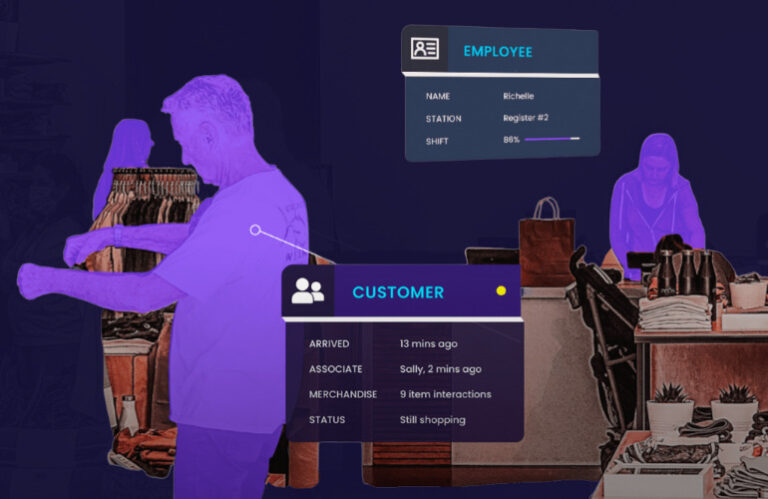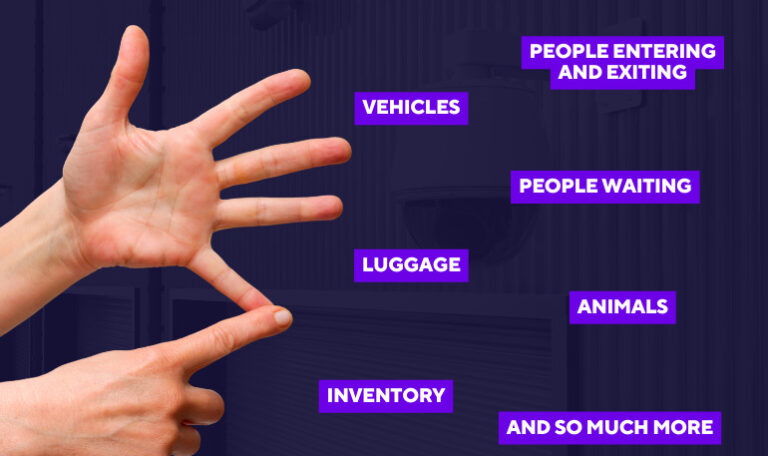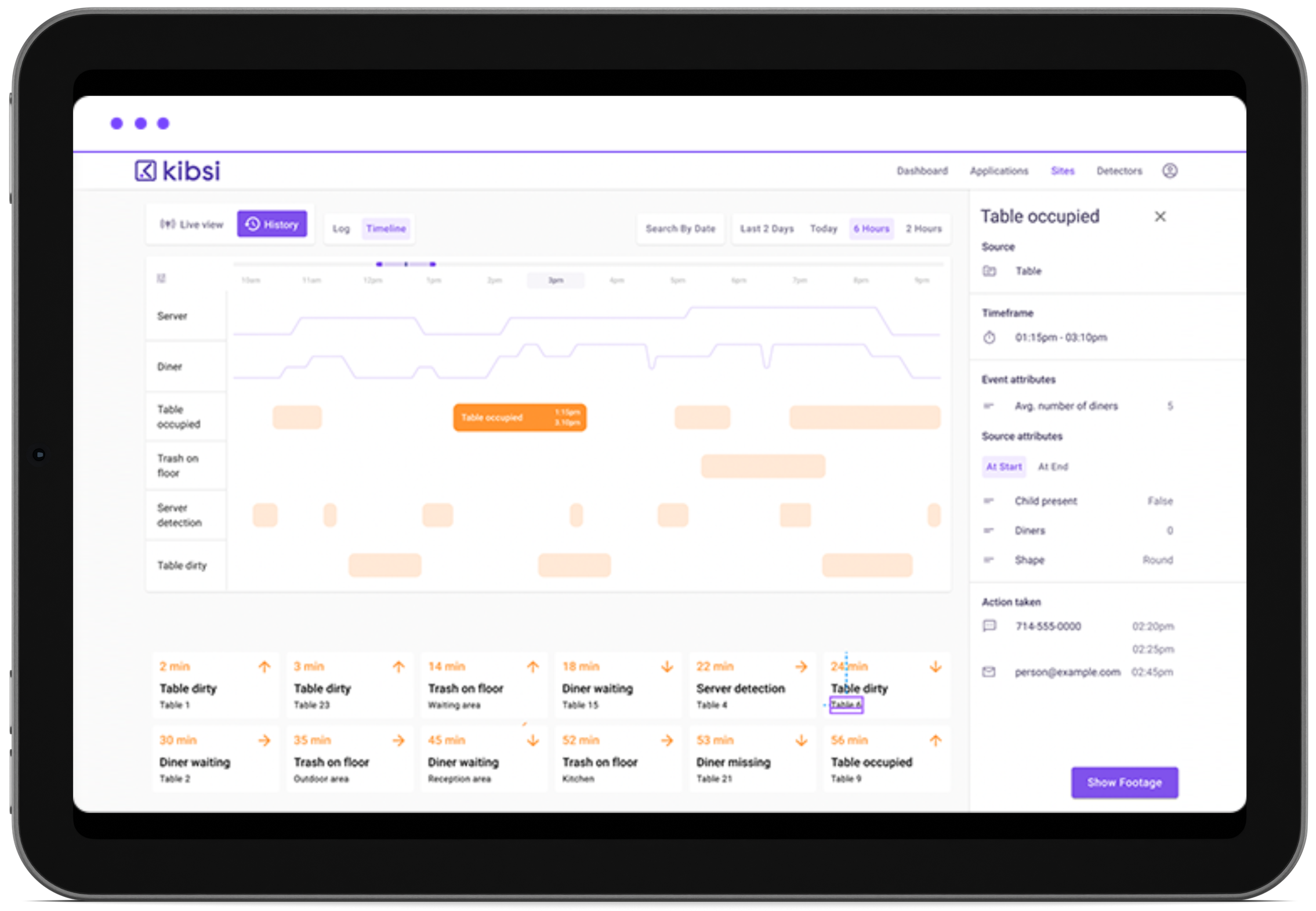One of the hottest topics in technology with massive potential is computer vision. In the simplest terms, computer vision is the ability of a computer to interpret and understand digital images. It allows businesses to make use of the vast amounts of data that they are collecting in order to improve efficiency and effectiveness.
In essence, it provides technology that imitates what a person might do if they had the ability to look anywhere in their business at any time and analyze what they see. For example, computer vision can be used to identify defects in products, recognize faces in pictures, and track customer behavior.
In this article, we’ll describe computer vision (CV), share examples of how it’s being used now and how it could be used in the future, the benefits that businesses are experiencing, and some top strategies / considerations for adding computer vision to organizations.
What is computer vision and what are its key components
Computer vision is an area of artificial intelligence that deals with teaching computers how to interpret and understand digital images. Just like humans, computers need to be able to understand the content of an image in order to make sense of it. However, this is a far more difficult task for a machine than it is for a human.
One of the key components of computer vision is object recognition. This is the ability of a computer to identify and classify different objects in an image. For example, a computer might be able to identify a cat, a dog, a person, or a table in an image.
Another important component of computer vision is image segmentation. This is the process of partitioning an image into smaller regions in order to understand its structure better. For example, image segmentation can isolate objects from their background or identify individual pixels that belong to the same object.
Finally, another key concept of computer vision is motion estimation. This is the ability to track objects as they move around in an image. Motion estimation can be used for applications such as video compression and object tracking.
Together, these three components – object recognition, image segmentation, and motion estimation – are essential for teaching computers how to interpret digital images and video.
How is computer vision helping businesses today?
Computer vision is still a relatively new technology for businesses – this has largely been due to the historical complexity of CV projects (more on this later). Generally speaking, some of the most popular use cases include identification, monitoring, and analyzing what happens in a business in order to improve performance, efficiency, safety, and security.
For example, in manufacturing (one of the biggest consumers of computer vision technology), CV systems are often used to inspect products for defects or to sort them into categories. More recently, manufacturers are taking CV to new levels by using it to monitor and action production line issues, safety issues, and even worker health by analyzing posture and movements. Ultimately the goal is to increase production efficiency while improving worker safety – both delivering significant bottom-line value.
The retail industry is also stretching computer vision into new use cases. In addition to the obvious stock use cases, they are really embracing the power of cameras and artificial intelligence to understand their customer experience and shopping statistics better. For example, while sales receipts can tell a store how much people purchased, only CV can tell them how many people entered, browsed, and left without any transaction. With a flexible computer vision platform like Kibsi, they could even start to analyze customer interactions with staff to answer more complex questions like how long until this customer was served. Did a member of staff offer help to this customer while they shopped? How long were they in the store and where did they spend their time? Understanding these types of questions can lead to monumental improvements for retail stores.
Some other industries where computer vision is being applied include agriculture (monitoring crops), transportation (traffic monitoring), and healthcare (analyzing patient wait times and facility usage).
In all of these industries and more, the most common computer vision application today is security and surveillance. From facial recognition for building access to monitoring for unauthorized people in secure areas, it’s easy to see how even one application can have a sweeping impact.
How can companies ensure they are getting a return on their computer vision investment?
With the potential applications of CV being nearly limitless, businesses have been particularly eager to use it, but what is the financial return on investment for these sorts of projects?
The answer, unfortunately, is not a simple one. Computer Vision is still a relatively new technology, and there are few hard and fast rules when it comes to measuring its ROI. Factors that can affect the ROI of a CV project include the specific application being used, the size and scope of the project, and the overall company strategy. That said, there are a few general tips that can help businesses maximize the ROI of their CV projects.
First, consider the technology you already have in place and how you can stretch it rather than add to it (using existing IP/security cameras, for example). Second, it’s important to carefully select the right application for the specific business need. Not all CV applications are created equal, and using the wrong one can lead to poor results and wasted resources. Third, businesses should make sure they have the necessary infrastructure in place to support a successful CV project. Without high-quality data inputs, even the best algorithm will produce subpar results. Finally, it’s important to set realistic expectations for what a CV project can achieve. The hype surrounding this new technology can often lead to unrealistic hopes for its capabilities, which can ultimately lead to disappointment when those hopes aren’t met.
By keeping these tips in mind, businesses can help ensure that their computer vision projects have a positive impact on their bottom line.
What challenges do businesses face when implementing computer vision?
Businesses can face many challenges when implementing computer vision, especially if they are unfamiliar with the technology. There are really three approaches to computer vision implementation: 1) build it from scratch; 2) use a purpose-built solution; 3) leverage a flexible platform.
Building it from scratch has been the most common approach historically given that computer vision is a relatively new solution. This has generally been the purview of big enterprises as they have the money and resources for these types of large-scale projects. This scenario relies heavily on expensive, expert consultants delivering bespoke solutions for specific use cases. To its credit, this approach does achieve results. Unfortunately, it is also expensive to maintain and becomes outdated in its technology and functionality almost as soon as it’s released.
Purpose-built solutions are much faster to implement, of course, and are typically lower-risk projects. They do one thing, and they do it really well. On the downside, they typically only do one thing. So if you have additional ideas or goals for leveraging computer vision in your business, you’ll have to go back to the drawing board every single time.
The final option is the most flexible: leveraging a computer vision platform like Kibsi. In our case, we built a tool that can be used to easily create computer vision applications for any industry and 1000s of standard and custom use cases. With a simple point-and-click interface, businesses can get up and running quickly on their first use case. They can then extend their use of computer vision to other areas when they’re ready. Because it’s intended to be an extendable system, Kibsi can connect any existing IP camera making it ideal for organizations that want to stretch the investments they’ve already made in their business.
Conclusion
If you’re not using computer vision in your business yet, now is the time to get on board. This technology is only going to become more ubiquitous and important in the coming years, so it’s essential that businesses start incorporating it into their operations sooner rather than later.
The best way to do this is by using a computer vision platform like Kibsi, which will give you maximum flexibility and results. So what are you waiting for? Learn more about computer vision today and contact us to get started.







